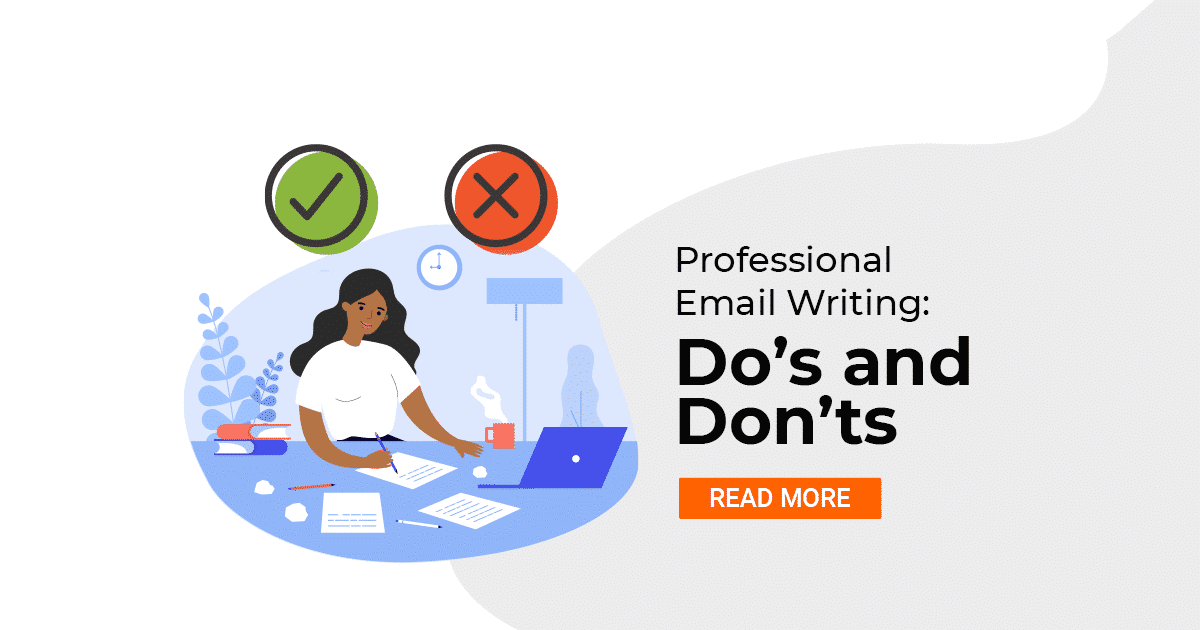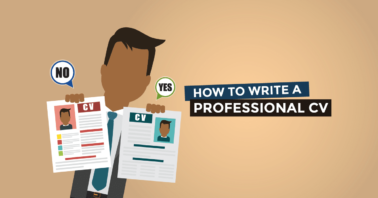Only a few things can tarnish your professional brand, quite like a poorly written email. One-click of the ‘send button can be the difference between a successful business exchange, a successful job application, and a potential HR issue or coworker conflict. According to the International Data Corporation (IDC) study, workers spend 28 per cent of their workweek reading and answering emails; the best way to grab anybody’s attention fast is by creating an effective email.
In this article, you’ll learn how to avoid email disasters and discover what makes a good email because a professionally written email not only makes you look good, but it helps build trust.
Email Do’s
Do have a clear subject line- Whether you’re sending an email to your boss or applying for a job, ensure your “Email Subject” is meaningful at a glance. If the recipient has an inbox full of messages, they will decide which to read based on the relative importance of senders and subjects.
Do use proper professional salutation – Using “Hey, Yo, or Hiya” isn’t professional, no matter how well you know the recipient. Use “Hi” or “Hello” instead. To be more formal, use “Dear (insert name).” Using the person’s name in the salutation – “Hello Eseosa” – is entirely appropriate, but remember not to shorten a person’s name unless you’re permitted to do so.
Do strike a balance between formal and casual language – Your email creates an image of who you are and your level of professionalism. When sending an email to upper management or a stranger, ensure you keep it professional regarding your font, spelling, words, etc. You might want to throw in some emoji’s to give your email life but know who can get it and who can’t.
Do Use an Introduction – In a case where you’re reaching out to someone that doesn’t know, ensure you introduce yourself concisely and effectively. Try “Dear Hiring Manager, My name is Eseosa, expert content developer and communications manager. I came across your job ad on Jobberman…..” or “Dear [name], My name is Eseosa Osayimwen, Marketing Specialist for Jobberman Nigeria. I got your contact information from….”. This is especially important when introducing yourself to new contacts, potential customers, clients and employers who want to know how you received their contact information.
Do Know The Culture – Do a bit of research into the culture of your audience. When sending emails to people from indirect cultures, it is proper protocol and a best practice to research country customs. For example, in Japan, it is polite and customary to inquire about the weather in the first sentence of a business email.
Do use the right fonts and spacing – Presentation is key in all aspects of life, including emails. As unimportant as font type may be, it can serve as the thin line between your email getting attended to or swept out. Make use of your company’s official font and email best practice, or better still, make use of either Sans serif, Serif or the Garamond fonts. There must always be spaces between paragraphs, sentences and key points – this improves the readability of your email.
Do Double-Check Your Attachments and email – When you attach a file, be kind enough to take a few extra seconds to double-check that all attachments were uploaded as stated in the body of your email. Also, ensure that you refer to any attachments in the email by saying “Kindly find attached” or “See below-attached documents”. Misspelt or omitted words indicate a lack of attention to detail.
Do sign off – Every email should include a signature that tells the recipient who you are and how to contact you. It should also have subtle pleasantries like “ Do let me know if you have any questions or concerns. Best regards, Warm regards, Cheers! Etc’ all depending on your company culture or personal brand. Set it up to automatically appear at the end of each email. Include all of your professional contact details.
Do Acknowledge emails – You could feel a bit overwhelmed sometimes; emails are hitting you left, right and centre, but don’t throw your professionalism out the door by ignoring them. Even when the email doesn’t particularly need a response, it is essential to acknowledge just to let them know you’ve received the email. This will help you avoid the awkward “Did you get my email?” question.
Email Don’ts
Don’t assume your email is private – Something can go wrong with any software program, and your email might be misdirected. Also, many companies monitor their employees’ email, so don’t send anything via email that you wouldn’t want your colleagues to see. If your message is highly personal or sensitive, ask for a face-to-face meeting.
Don’t type in capital letters – Using all capital letters in any context is regarded as the equivalent of shouting.
Don’t use coloured fonts- Keep your font size and colours clean and professional. Font size should be 10 – 12 while the colour should be black. In a case where you want to point out something, you can then make use of a coloured font for the sake of emphasis.
Don’t Hit “Reply All” – Avoid using “Reply-to-All” unless everyone needs to know. It can be embarrassing sharing information to an entire group or company when only a specific person needs to know. If you’re simply acknowledging receipt or confirming the time of a meeting, respond only to the sender.
Don’t assume the recipient knows what you are talking about – Create your message as a stand-alone note, even if it responds to a chain of emails. This means no “one-liners.” Include the subject and any references to previous emails, research or conversations. It can be frustrating and time-consuming to look back at the chain to brush up on the context. Your recipient may have hundreds of emails coming in each day and likely won’t remember the chain of events leading up to your email.
Don’t be negative – Never send an angry email, or give a rude response. Give your message some thoughtful consideration before sending it. If you feel angry, put your message into the “drafts” folder, and review it again later when you are calmer and have time to formulate an appropriate response.
Don’t overuse exclamation points and abbreviations – It’s not professional to use a string of exclamation points!!!!! Or so many abbreviations, it might make you look lazy. Exclamation points and other indications of excitement, such as emoticons, abbreviations like LOL, do not translate well in business communications. Leave them off unless you know the recipient extremely well.
Quick Tips –
Email Structure –
- Subject line
- Salutation
- Body
- Action point
- Closing remarks
- Signature
Steps for writing an effective yet professional email
- Identify your goal – You have to know the purpose of your email, what action are you expecting from your audience
- Consider your audience – Are you sending the email to a colleague, a manager, your CEO, an HR? This will help you structure your email better.
- What’s the CTA – You need to state the action point for your email clearly
Email like a Boss-
- Instead of “Sorry for the Delay” – Try “Thanks for your Patience”
- Instead of “What works for you?” – “Try Could you do 5 PM?”
- Instead of “No problem/ no worries” – “Try I’m always happy to help”
- Rather than sending so many confusing emails – Try “Will you be free for a phone call?”
- Instead of “If that makes sense” – Try “Let me know if you need further help or clarification”
- Instead of “Just wanted to check in” – Try “Can I please get an update?”
- Instead of “Oh sorry@ My bad I missed that” – Try “Thanks for spotting that. The issue has been rectified.”
Need extra help levelling up in your career or job hunt? We’re here to help. Simply visit www.jobberman.com/job-seeker/level-up to get started.
Original article written by Eseosa Osayimwen






